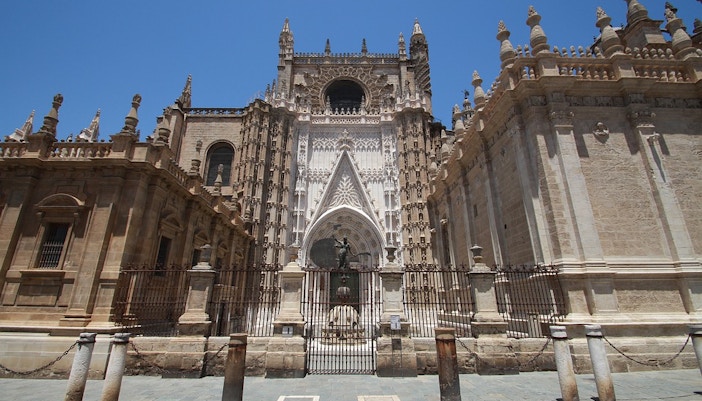The site at which the Seville Cathedral was built also served as the former Almohad Mosque. After the conversion of the mosque into a cathedral, several alterations were made in the structure while features like Giralda and Patio de Naranjas being included in the cathedral's architecture.























